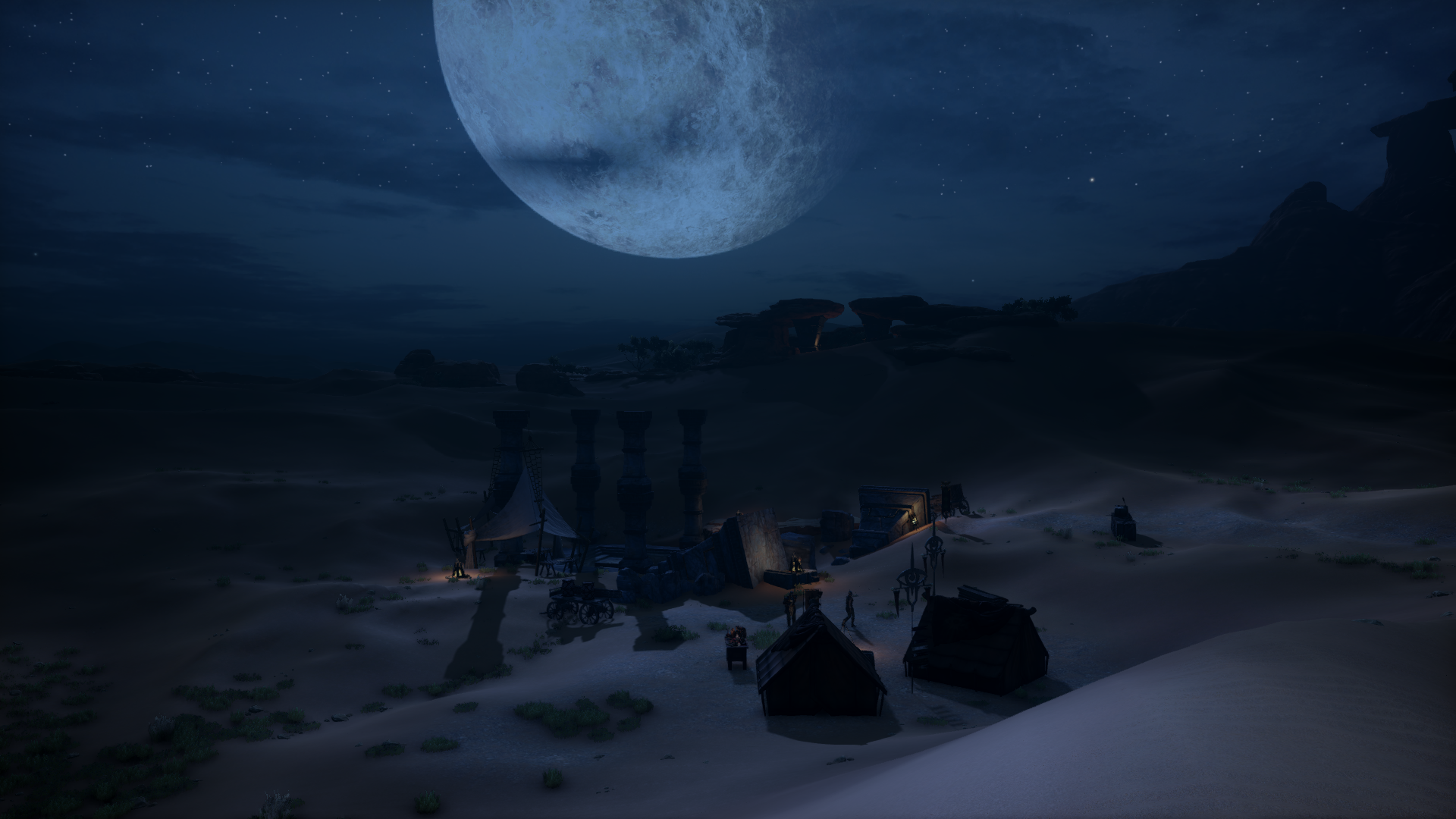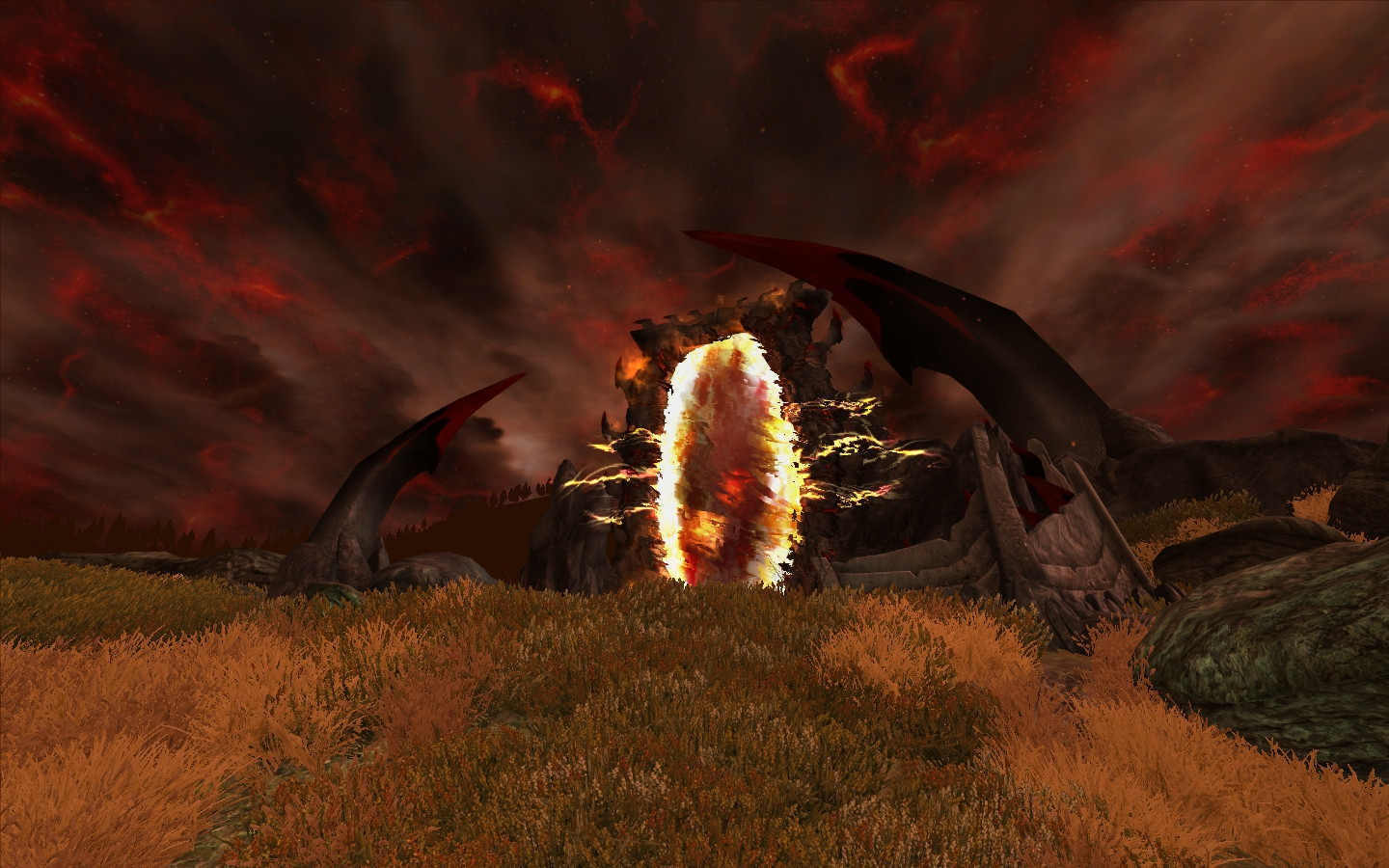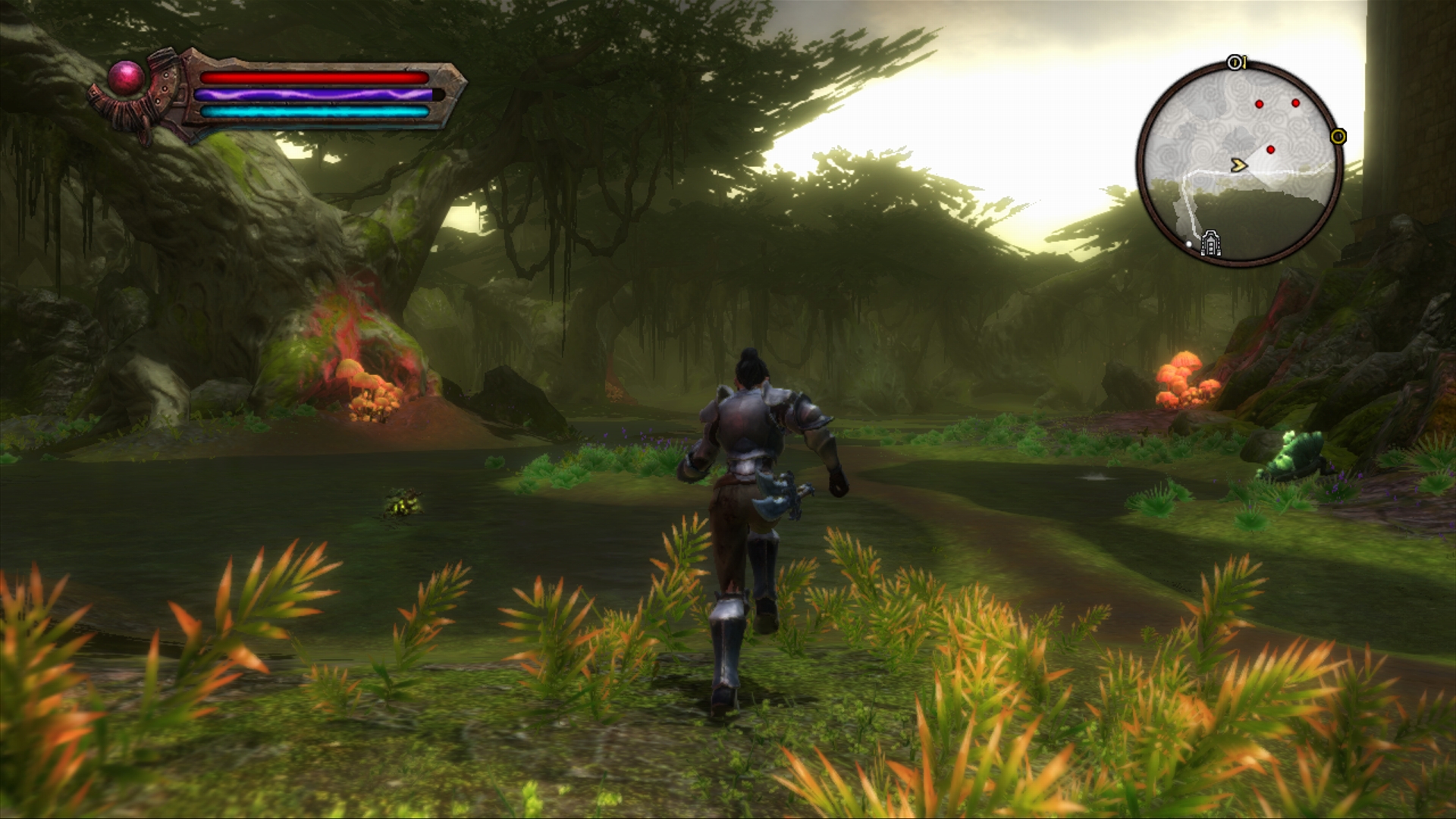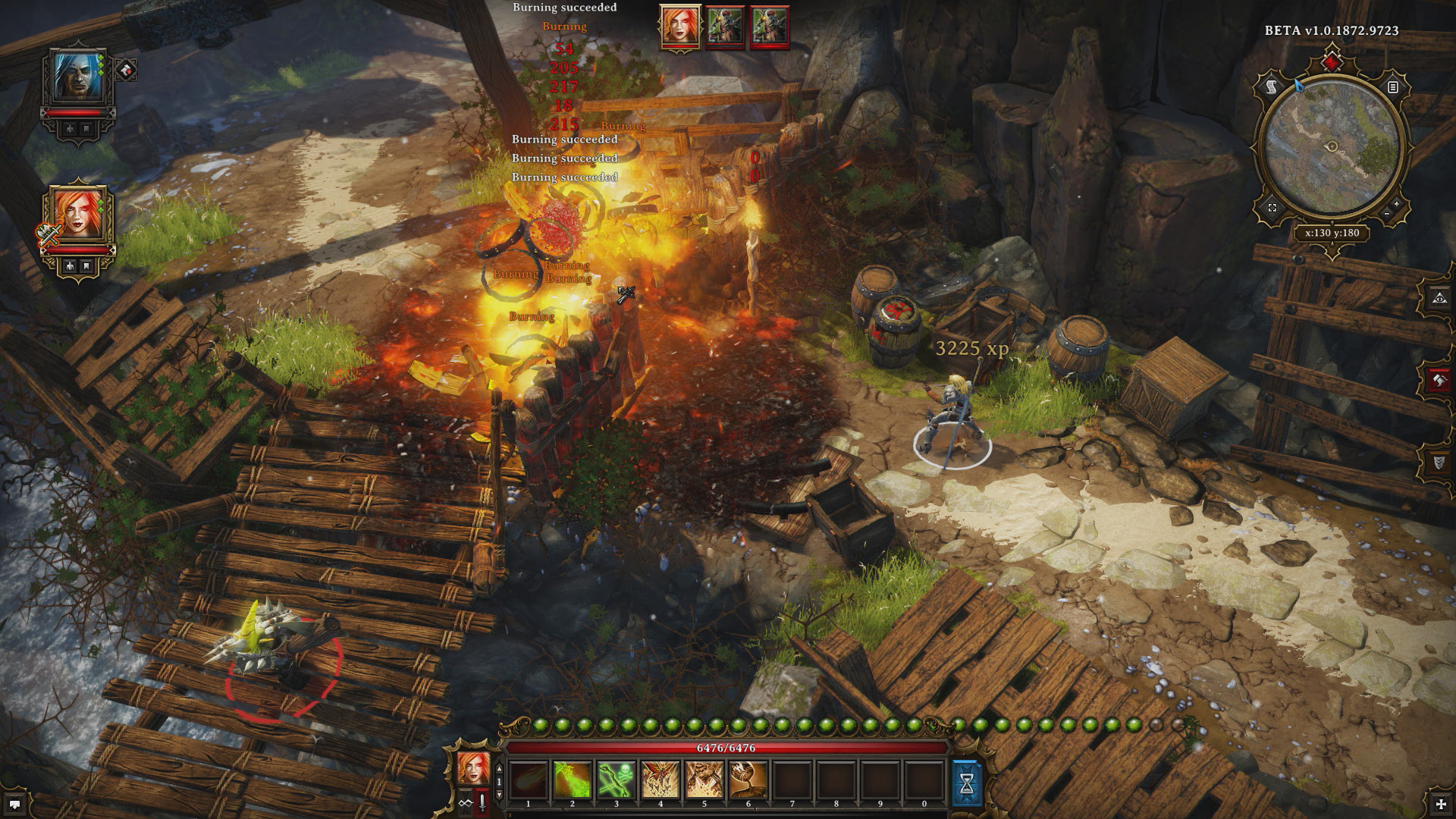The dullest places to visit in the best RPG worlds
Bored of the Rings

RPGs have and will continue to enrich our lives immensely. Because when an RPG fulfils our wildest expectations, we're not just sitting on the sofa, mourning tomorrow's seven am start for the weekly slog. We're commandeering our own ship and crew across the universe. Were stalking dragons amid ruined castles, on the way to becoming grand ruler of all we survey. Were utterly invested in fighting for a cause, with the future of an entire, carefully crafted universe dependent on our actions; both good and bad.
However, throughout the course of enjoying epic adventures through hours of innovative open-world gameplay, I have, on occasion, been dragged crashing back to reality. The cause? The odd incoherently lacklustre areas, popping up to take the sheen off even the mightiest of RPG worlds. From the likes of the Mass Effect and Elder Scrolls games, to lesser known but equally brilliant titles, such as Divinity: Original Sin and Kingdoms of Amalur: Reckoning, there is one common thread. All of these games are great, but, thanks to one bad-apple location, none of them is perfect. So whats wrong with them, exactly? How and why do these dull areas detract from our overall RPG experiences? Here are six games that pose the dilemma.
The Hissing Wastes - Dragon Age: Inquisition

Dragon Age: Inquisition is a great big magnet of character attachment. Falling in love with characters is unavoidable. You can even possess your own castle-come-love-mansion where everyone just adores you and thinks you're great. And the open-world exploration throughout is beautiful, varied, and did I mention beautiful? But as the hours trickle on, a sense of deja vu begins to settle in. It's not that the areas suffer from visual similarity, since BioWare has done an excellent job of moulding diverse landscapes. It's the open world gameplay that feels stuck on repeat.
This is especially apparent in the later stages of the game, in areas such as The Hissing Wastes. As a wasteland, were understandably faced with a barren expanse of land to explore, but with set-dressing greatly reduced, the games underlying structural issues are accentuated horribly. Repetitive fetch quests, 'blank spaces' that offer no reward for exploration, easy battles, too many rifts to close Its all too obvious. Essentially, were faced with open-world gameplay experienced as copy-and-paste, and while DA: I saves itself from any grievous damage thanks to a gripping storyline and extremely well crafted characters, this structural stuff potentially hinders any yearning for future replay.
Oblivion gates - The Elder Scrolls IV: Oblivion

There are many, many great things we can say about Oblivion. Massive and addictive open-world? Check. Gripping storyline? Yep. Diverse character development? Of course. But do you want to go back and close that gate? Nope. Not even a little bit. While not quite as bad as ironing, closing the oblivion gates to keep the baleful Daedra at bay seems to be a universally hated chore. The gate destinations themselves are well crafted, in terms of their vibe, at least, owning a suffocating presence of death and despair that only increases our urgency to close them. However, in terms of structure and design, navigating your way through dead-end passages, caves and identikit rooms, in a realm where everything relentlessly wants to kill you rapidly loses its appeal.
When you eventually do the deed, the return of those verdant, deer-filled fields evokes an overwhelming sense of relief, if only because its over. Except that its not. More gates open up, in addition to those needed in to increase the haul of sigil stones. Exploring otherworldly new areas has never felt so tedious, rendering the gates of Oblivion places we are desperate to forget, rather than powerful experiences to remember.
Gran Pulse - Final Fantasy 13

I like Final Fantasy 13 dont look at me like that - I really do! The games linearity, while heavily criticised, suits the pace of the storyline in many respects, and the environments explored along the way are magnificently eye-catching, married with tough battles involving plenty of trial and error strategy. Saying that, by the time we enter Gran Pulse, expecting a vast and dangerous plain appropriately feared by the people of Cocoon, were more than ready for some addictive open-world exploration.
Weekly digests, tales from the communities you love, and more
Gran Pulse is certainly vast and dangerous. But unfortunately, also painfully boring. Sighs could be heard from across the globe, as wandering RPGers first plodded from battle to battle, plain to plain, like lost souls searching for meaningful NPC relationships and butterflies to chase. Instead, after such a long and ominous build-up, the disappointment is overwhelming. Once Final Fantasy games open up, the usually explode with character and content, filled out with bustling towns and cities, fun and urgent side-quests, and many a mystery to investigate along the way. Without this to break up the monotony of random enemy encounters, Final Fantasy 13 becomes, well, just random enemy encounters, really. It suffers heavily, leaving us truly not wanting to come back for more. Not that there is much more to be had in the first place.
Anywhere you drive the Mako - Mass Effect

From the multi-cultural Citadel and the beloved Normandy, to moons, planets, space stations, asteroids, starships and really scary reaper nest monstrosities, Mass Effect offers vast scope on a munificent sci-fi level. So why is one of the best RPGs ever skulking around on this list? Because of an exploration feature I choose to forget. Or try to. But cant, because its terrible.
As the saviour of multiple universes, its your responsibility to harvest precious materials to ensure full competency in the end-game. In the first ME, this means taking your crew for a joyride in the Mako buggy, dropping in on a planet, and scouring the environment using a radar. Despite the awful car handling, this is passable the first time round. The second, third, fourth and fifth times, however, demonstrate three specific things: That alternative, off-track exploration results in sheer nothingness, that getting stuck up mountains due to horribly springy physics (a lot) is furiously dull, and that seeing rocks and then more rocks, over and over again, forever, truly dampens our yearning to explore the majesty of the universe. BioWare misses an opportunity here, and this is a feature I hope to see improved in ME4. Itd be epic to carry out such tasks, and even side quests, on a vibrant and fully realised alien world. Mass Effect is a universe of brilliantly crafted cultures, so can we make it a bit more interesting to explore please?
Klurikon - Kindoms of Amalur: Reckoning

With its bold, chunky production design, shot through with vibrant colours and textures, Kingdoms of Amalur: Reckoning almost feels like the offline version of World of Warcraft, delivering a stunningly spirited world you really want to explore. Its vast array of caves, ruins, magical forests, towns and cities positively burst with life. And like the Dragon Age and Elder Scrolls games, it delivers huge scope, easily containing 50 hours of exploration in addition to the main storyline.
But that doesnt necessarily mean that all those hours are exciting. Akin to Dragon Age: Inquisition in this respect, the open-world areas, while diverse, offer exploration that sometimes feels strained. I started to feel this in Klurikon, a region entered after a memorable battle with the hideous (and enormous) Balor. Sadly, a little inadvertent grinding at this point saw the game deem me over-levelled, detracting from the importance of side quests, and making me feel punished for my earlier enthusiasm for exploring its world. Simply, Klurikon just wasnt designed to accommodate my wandering. Massive nerd tears were shed as this pattern increased in intensity towards the end of the game; the growing tedium emphasised without the strength of a good-enough storyline.
Towns in general - Divinity: Original Sin

As if in answer to our prayers, Larian Studios put major focus on its game's environment, not just in form, but in terms of making the fabric of the world an engaging game mechanic in itself. There are four main regions to explore as you progress through the game, with busy fishing towns, forest villages, and secret-filled dungeons en masse. But in addition to delivering the expected looting, lock-picking, object-moving, lever-pulling and trap-triggering, Divinity: Orginal Sins environment is design to be a weapon in its own right.
Whether youre creating volatile surfaces to trap enemies, or setting off deadly substances for game changing damage, using the environment to your advantage is a table turner, and often the most effective way to win the games uncompromising battles. So what do we actually have to complain about? The problem, alas, is the environmental structure around the action. The difficulty of battles and abundance in loot necessitates far too many repeat visits to towns along the way. Quests work similarly, to the point where toing and froing from place to place, repeating conversations with the same vendors and characters, feels like a tedious mess of bureaucratic busywork. Get it all cleared, and then youll find that the next area brings all of that again, but its tougher. Talk about making a rod for your own back.



